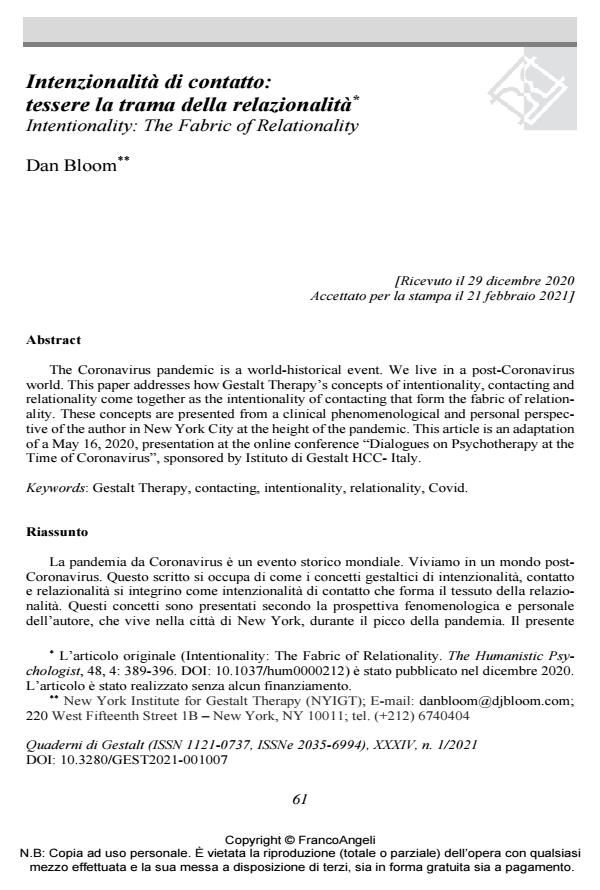Intenzionalità di contatto: tessere la trama della relazionalità
Titolo Rivista QUADERNI DI GESTALT
Autori/Curatori Dan Bloom
Anno di pubblicazione 2021 Fascicolo 2021/1
Lingua Italiano Numero pagine 12 P. 61-72 Dimensione file 187 KB
DOI 10.3280/GEST2021-001007
Il DOI è il codice a barre della proprietà intellettuale: per saperne di più
clicca qui
Qui sotto puoi vedere in anteprima la prima pagina di questo articolo.
Se questo articolo ti interessa, lo puoi acquistare (e scaricare in formato pdf) seguendo le facili indicazioni per acquistare il download credit. Acquista Download Credits per scaricare questo Articolo in formato PDF

FrancoAngeli è membro della Publishers International Linking Association, Inc (PILA)associazione indipendente e non profit per facilitare (attraverso i servizi tecnologici implementati da CrossRef.org) l’accesso degli studiosi ai contenuti digitali nelle pubblicazioni professionali e scientifiche
La pandemia da Coronavirus è un evento storico mondiale. Viviamo in un mondo post-Coronavirus. Questo scritto si occupa di come i concetti gestaltici di intenzionalità, contatto e relazionalità si integrino come intenzionalità di contatto che forma il tessuto della relazionalità. Questi concetti sono presentati secondo la prospettiva fenomenologica e personale dell’autore, che vive nella città di New York, durante il picco della pandemia. Il presente articolo è l’adattamento di una presentazione ad una conferenza online, "Dialoghi sulla psicoterapia ai tempi del Coronavirus", tenutasi il 16 maggio 2020 e organizzata dall’Istituto di Gestalt HCC Italy.
Parole chiave:Psicoterapia della Gestalt, contatto, intenzionalità, relazionalità, Coronavirus.
Dan Bloom, Intenzionalità di contatto: tessere la trama della relazionalità in "QUADERNI DI GESTALT" 1/2021, pp 61-72, DOI: 10.3280/GEST2021-001007